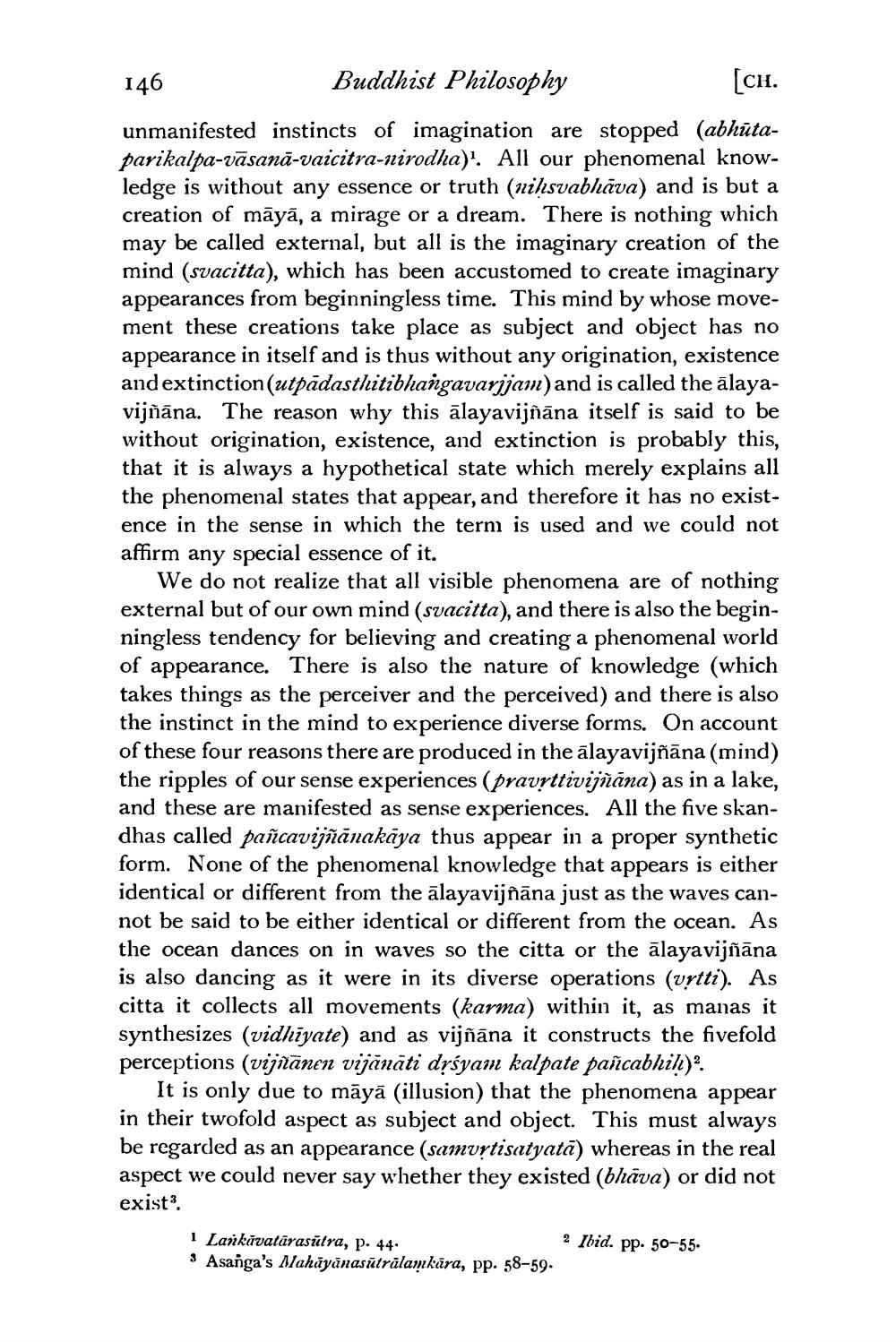________________
146
Buddhist Philosophy
[CH.
unmanifested instincts of imagination are stopped (abhūtaparikalpa-vāsanā-vaicitra-nirodha)'. All our phenomenal knowledge is without any essence or truth (nihsvabhāva) and is but a creation of māyā, a mirage or a dream. There is nothing which may be called external, but all is the imaginary creation of the mind (svacitta), which has been accustomed to create imaginary appearances from beginningless time. This mind by whose movement these creations take place as subject and object has no appearance in itself and is thus without any origination, existence and extinction(utpādasthitibhangavarjjam) and is called the ālayavijñāna. The reason why this alayavijñāna itself is said to be without origination, existence, and extinction is probably this, that it is always a hypothetical state which merely explains all the phenomenal states that appear, and therefore it has no existence in the sense in which the term is used and we could not affirm any special essence of it.
We do not realize that all visible phenomena are of nothing external but of our own mind (svacitta), and there is also the beginningless tendency for believing and creating a phenomenal world of appearance. There is also the nature of knowledge (which takes things as the perceiver and the perceived) and there is also the instinct in the mind to experience diverse forms. On account of these four reasons there are produced in the ālayavijñāna (mind) the ripples of our sense experiences (pravrttivijñāna) as in a lake, and these are manifested as sense experiences. All the five skandhas called pañcavijñānakāya thus appear in a proper synthetic form. None of the phenomenal knowledge that appears is either identical or different from the alayavijñāna just as the waves cannot be said to be either identical or different from the ocean. As the ocean dances on in waves so the citta or the ālayavijñāna is also dancing as it were in its diverse operations (urtti). As citta it collects all movements (karma) within it, as manas it synthesizes (vidhiyate) and as vijñāna it constructs the fivefold perceptions (vijñānen vijānāti drśyam kalpate pañcabhil)
It is only due to māyā (illusion) that the phenomena appear in their twofold aspect as subject and object. This must always be regarded as an appearance (samurtisatyatā) whereas in the real aspect we could never say whether they existed (bhāva) or did not exist?.
i Lankāvatārasūtra, p. 44. 3 Asanga's Mahüyünasūtrālamkūra, pp. 58-59.
2 Ibid. pp. 50-55.




